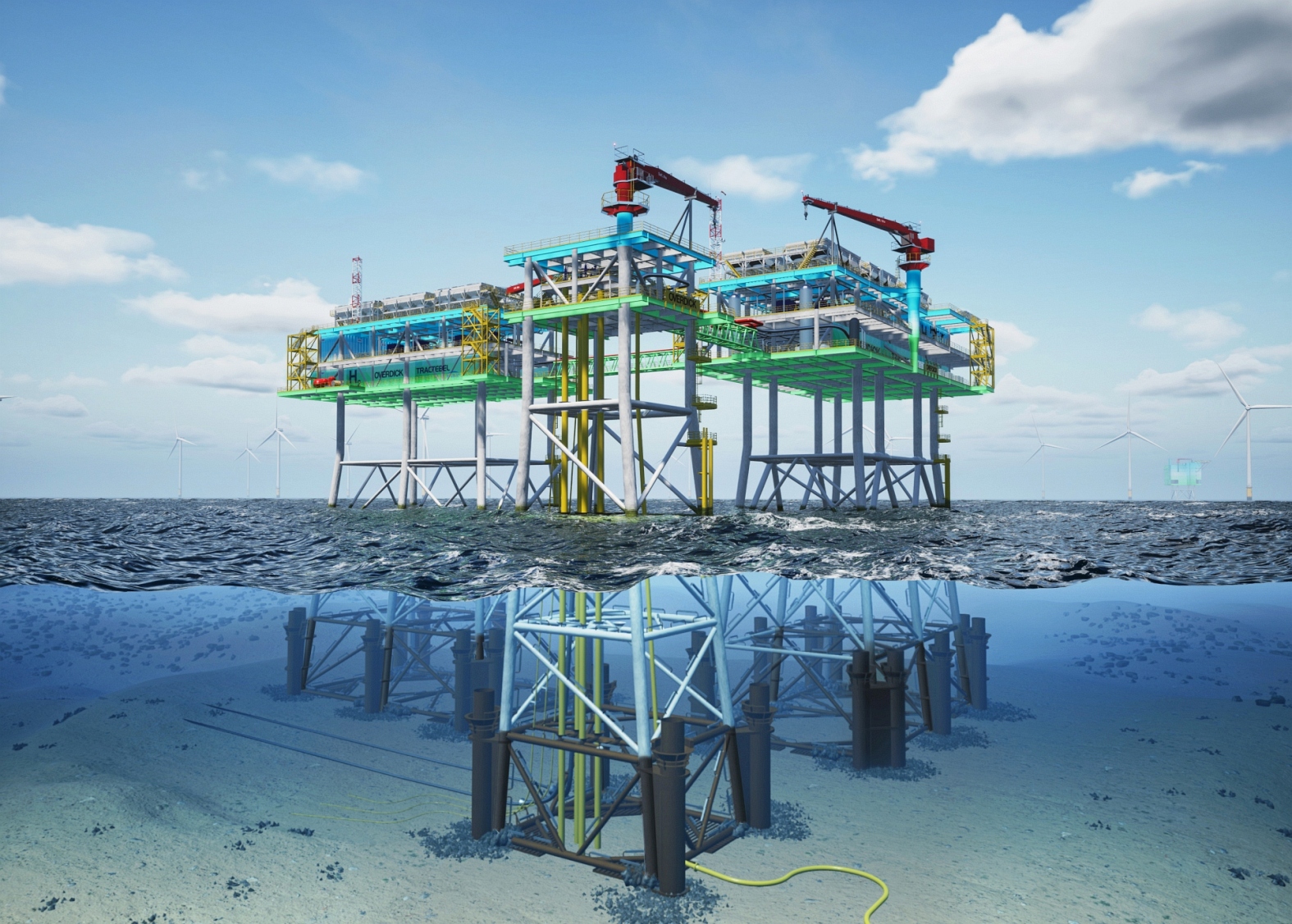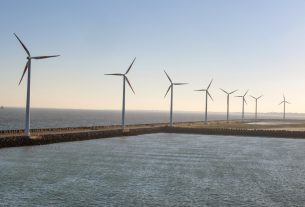Germany – Tractebel and its partners have created the world’s first offshore infrastructure and processing facility concept for hydrogen storage in offshore caverns.
Tractebel Overdick GmbH’s offshore experts unveiled a design study outlining an innovative solution for large-scale hydrogen storage on the high seas: a scalable offshore platform for the compression and storage of up to 1.2 million m3 of hydrogen. Underground salt caverns will be used to store and buffer the hydrogen produced offshore before it is transported via pipeline to the onshore grid and, finally, to consumers and customers.
Green hydrogen generated by offshore wind energy is becoming an important component of the global energy transition, but current hydrogen production technologies will only be effective if production rates reach an industrial scale. To meet future H2 energy demands, massive amounts of hydrogen (H2) from renewable sources will be required, and offshore sites will be critical to industrial-scale production. Tractebel pioneered an innovative solution to meet this demand in 2019, developing a one-of-a-kind offshore hydrogen platform concept, which was followed by an optimized, scalable version the following year. Tractebel’s experts are now breaking new ground with the design of the world’s first offshore infrastructure and processing facility concept for hydrogen storage in offshore caverns.
This offshore platform complex consists of a wellhead platform for cavern operation and a series of compression platforms for staged capacity increase. Additional modules can be added to the plant in the future if necessary. The study assumes a capacity of 2 GW of green offshore wind power converted to hydrogen. Individual extensions and adaptations are possible at any time.
Offshore compression and storage hubs like these have the potential to increase the flexibility of upcoming offshore hydrogen production. As the compression effort at wind farm electrolysis plants decreases, so will the cost of offshore hydrogen production sites in general.
The newly designed storage and compressor platforms process 400,000 Nm3/h of hydrogen, which is stored at pressures of up to 180 bar in underground salt caverns. These storage facilities absorb production peaks, optimize flow rates, and allow for a more cost-effective design of the export pipeline.
Existing offshore infrastructures can directly use green hydrogen instead of other energy sources for their operations, which contributes significantly to the sustainability of large underground hydrogen storage facilities. This contributes to the overall decarbonization of the offshore industry.
In addition to Tractebel’s renewable energy and offshore experts, the engineering teams of DEEP.KBB GmbH and PSE Engineering GmbH were involved in the design study as important components. This forward-thinking group of experts aided in the concept’s full development, from geology to processing equipment. This collective know-how serves as the foundation for future optimizations of the offshore hydrogen hub and future H2 projects.




